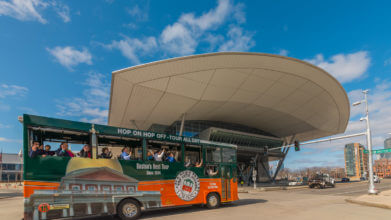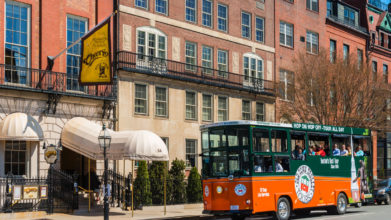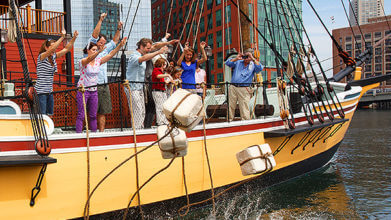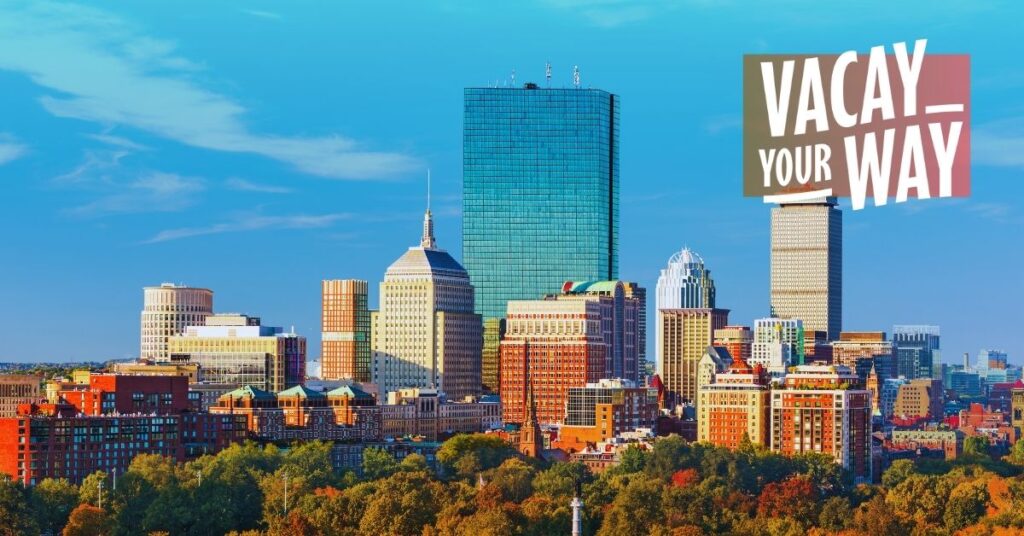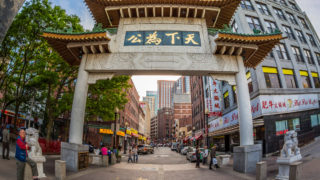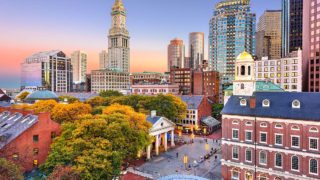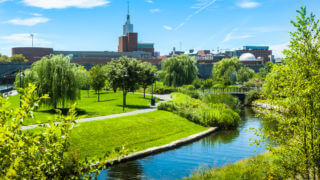A Guide to Boston’s Neighborhoods
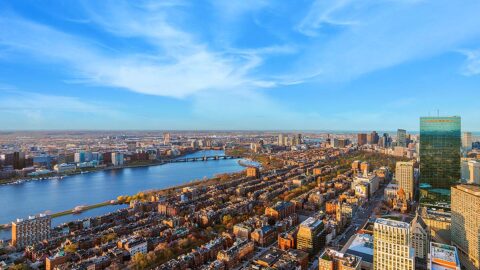
Boston, with its rich historical tapestry, vibrant culture, and diverse neighborhoods, is a city that should be high on your travel itinerary. Each neighborhood, from the artsy streets of South End to the historic lanes of Beacon Hill, narrates a unique story, making Boston a mosaic of experiences. Whether it’s food, art, history, or sports, Boston’s neighborhoods offer something for everyone. So, pack your bags, put on your walking shoes, and get ready to explore the city that beautifully blends the old with the new.
An excellent way to immerse yourself in the eclectic charm of Boston’s neighborhoods is by hopping on the Old Town Trolley. The trolley system, a beloved fixture in the city, offers a unique vantage point to observe the multifaceted fabric of Boston’s communities. Experienced guides provide captivating commentary on the rich history and distinct character of each neighborhood as you traverse the city’s streets. The hop-on, hop-off service allows you to explore at your own pace, providing the flexibility to delve into areas that pique your interest.
Beacon Hill History
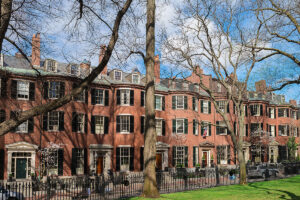 Steeped in rich tradition and history, Beacon Hill has played a pivotal role in shaping Boston’s identity. The neighborhood, originally one of three hills in an area known as Trimountain or Trimount, was named after a wooden beacon erected on its peak to alert locals of impending attacks or fires. A significant piece of its historical narrative revolves around the home of John Hancock, a notable figure best remembered for his large audacious signature on the Declaration of Independence. Hancock’s mansion, an emblem of his wealth and stature, was usurped by the British military during the Revolutionary War, offering a glimpse into that tumultuous period of Boston’s history.
Steeped in rich tradition and history, Beacon Hill has played a pivotal role in shaping Boston’s identity. The neighborhood, originally one of three hills in an area known as Trimountain or Trimount, was named after a wooden beacon erected on its peak to alert locals of impending attacks or fires. A significant piece of its historical narrative revolves around the home of John Hancock, a notable figure best remembered for his large audacious signature on the Declaration of Independence. Hancock’s mansion, an emblem of his wealth and stature, was usurped by the British military during the Revolutionary War, offering a glimpse into that tumultuous period of Boston’s history.
In later years, Beacon Hill transformed into an enclave for the “Boston Brahmins,” a term attributed to the city’s wealthy, influential, and highly cultured families. Their stately homes, tastefully adorned with classic Federal-style architecture, reflect a period of affluence and power that still resonates in the neighborhood today. Beacon Hill also holds a proud place in the history of African-American freedom, with a vibrant community of free African-Americans residing here in the 19th century.
What To See at Beacon Hill
Boston Public Garden
Adjacent to Beacon Hill, the Boston Public Garden offers a lush verdant retreat amid the city’s hustle and bustle. As America’s first public botanical garden, it showcases a stunning array of flowers and trees and the iconic Swan Boats. The garden is also home to several statues, including the famous “Make Way for Ducklings” sculpture, making it a beloved destination for both locals and tourists.
Louisburg Square
Louisburg Square is often considered the crown jewel of Beacon Hill. As you stroll around this private square, you’ll be captivated by the elegant Greek Revival-style houses, once home to renowned literary figures such as Louisa May Alcott. The well-manicured park at its center, adorned with statues of Columbus and Aristides, offers a serene respite amid the city’s hustle and bustle.
Charles Street Meeting House
The Charles Street Meeting House, once a vital hub for abolitionist activities, stands as a testament to Beacon Hill’s rich history. In its former life as a church, it welcomed speakers such as Frederick Douglass and Sojourner Truth. Today, you can admire its beautifully restored architecture, which houses a diverse mix of businesses, making it a must-visit spot for history buffs and architecture enthusiasts alike.
North End History
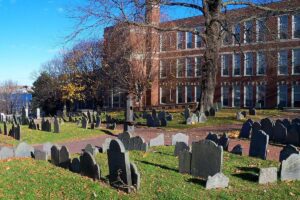
What To See in the North End
Faneuil Hall
Faneuil Hall, often referred to as “the home of free speech” and “the cradle of liberty,” played a pivotal role in the American Revolution. It served as a meeting place for the Sons of Liberty and hosted numerous spirited debates. Today, visitors can explore its historic Great Hall filled with portraits of prominent American figures, while the ground floor bustles with market stalls offering a diverse range of goods from local artisans and vendors.
Old North Church
The Old North Church, famous for Paul Revere’s “one if by land, two if by sea” signal, is a central figure in North End’s history. Here, visitors can witness the historic steeple that played a crucial role during the American Revolution, explore the church’s timeless Georgian architecture, and immerse themselves in the tales of Boston’s fight for independence.
Boston’s Copp’s Hill Burying Ground
Boston’s Copp’s Hill Burying Ground is a notable landmark in the North End. As one of the city’s oldest cemeteries, it offers a poignant snapshot of Boston’s past, with many gravestones dating back to the 17th century. Visitors can traverse the solemn pathways, appreciating the historic headstones and epitaphs, which include notable figures such as Edmund Hartt, builder of the USS Constitution, and Robert Newman, who lit the lanterns signaling Paul Revere.
Back Bay History
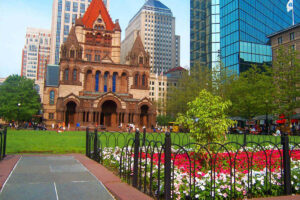
What To See in Back Bay
Boston Public Library
The Boston Public Library is a pivotal institution in Back Bay, epitomizing the neighborhood’s rich cultural narrative. As the first large free municipal library in America, it’s an architectural masterpiece filled with murals, mosaics, and an extensive collection of rare books and manuscripts. Visitors can admire the stunning courtyard, explore the grand reading room, and relish the library’s vast selection of literature.
Isabella Stewart Gardner Museum
The Isabella Stewart Gardner Museum is a jewel in Back Bay’s crown, housing an eclectic art collection amassed by Isabella Stewart Gardner herself. The museum’s Venetian-inspired design and lush courtyard transport visitors to an artistic haven. Inside, one can explore works spanning centuries and continents, including masterpieces by Titian, Rembrandt, and Sargent.
Copley Square
Copley Square forms the cultural heart of the Back Bay neighborhood. Named after famed painter John Singleton Copley, the square is a vibrant hub dotted with significant architectural landmarks. It’s home to the iconic Trinity Church, the Boston Public Library, and an array of statues and memorials. Visitors can bask in its cultural atmosphere, enjoy seasonal farmers’ markets, or simply relax amid its charming urban landscape.
Cambridge History
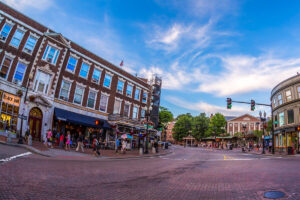
Two globally prestigious institutions, Harvard University and Massachusetts Institute of Technology (MIT), make Cambridge a landmark for visitors. Harvard, founded in Cambridge in 1636, is the oldest institution of higher learning in the nation and is consistently ranked among the world’s top universities. Similarly, MIT, founded in 1861, has also gained worldwide acclaim for its academic excellence.
This rich academic heritage, coupled with the city’s historical significance, has made Cambridge a must-see destination for anyone visiting Boston. Every corner of Cambridge whispers tales of the past and the city’s contribution to knowledge and innovation, making it an enduring symbol of American history and intellectual prowess.
What To See in Cambridge
Harvard Square
Harvard Square is the vibrant heart of Cambridge, teeming with life and history. This bustling hub adjacent to Harvard University offers a unique blend of scholarly tradition and modern culture. Visitors can explore a myriad of bookstores, cafes, and shops, witness the famous chess players in action, or soak up the atmosphere of lively outdoor performances. From historic buildings to eclectic street life, Harvard Square offers a rich slice of Cambridge’s character.
MIT Museum
The MIT Museum, part of the prestigious Massachusetts Institute of Technology, is a hub of innovation and exploration. This institution offers unparalleled insight into the world of science and technology, with exhibits ranging from robotics to holography. Visitors can delve into the cutting-edge research carried out at MIT, engaging with interactive displays and marveling at the fusion of art and science in the kinetic sculptures.
Harvard University
Situated in Cambridge, Harvard University is a beacon of academic excellence. As the oldest institution of higher learning in the US, it embodies Cambridge’s rich intellectual culture. Visitors can stroll across historic Harvard Yard, admire the grand architecture of Widener Library, and absorb the bustling academic atmosphere that pervades the campus.
Downtown History
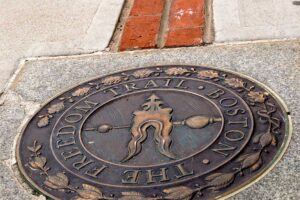
What To See Downtown
Freedom Trail
The Freedom Trail is a significant landmark in Downtown Boston, taking visitors on a historical journey through America’s fight for independence. This 2.5-mile-long trail connects 16 key historical sites, offering a visual narrative of the city’s Revolutionary past. Highlights include the Massachusetts State House, Paul Revere’s House, and the Old North Church. The trail is a favorite among history buffs, offering an immersive way to experience Boston’s rich history.
New England Aquarium
The New England Aquarium, located in Downtown Boston, plays a pivotal role in marine conservation and education. As a major attraction, it invites visitors to explore the wonders of the aquatic world, housing thousands of marine animals, from colorful tropical fish to majestic sea turtles. Its centerpiece, the Giant Ocean Tank, offers a mesmerizing view of Caribbean reef life, making it the perfect destination for families and marine enthusiasts alike.
Boston Common
Boston Common is the oldest city park in the United States, serving as a refreshing green oasis in Downtown Boston. This historic park, once a grazing ground for livestock, now welcomes locals and tourists alike for leisurely strolls, picnics, and public gatherings. Visitors can explore its tranquil Frog Pond, take a ride on the iconic Swan Boats, or marvel at the numerous monuments and memorials that relay stories of the city’s past.
Charlestown History
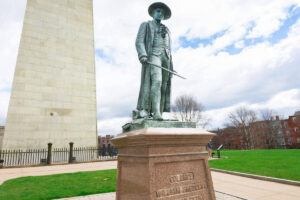
What To See in Charlestown
Bunker Hill Monument
The Bunker Hill Monument stands tall in Charlestown, Boston as a testament to the first major battle of the American Revolution. This granite obelisk offers visitors a panoramic view of the Boston skyline from its summit. One can also encounter exhibits detailing the historic event and the monument’s construction at the Bunker Hill Museum, located nearby.
USS Constitution
The USS Constitution, affectionately known as “Old Ironsides,” is a key attraction in Charlestown. As the world’s oldest commissioned naval vessel afloat, it offers visitors an authentic glimpse into maritime history. You can explore the ship’s deck, witness its sturdy construction, and learn about its pivotal role in several battles. Engaging exhibits in the adjacent museum further illuminate life at sea during the early 19th century.
Charlestown Navy Yard
The Charlestown Navy Yard is a vital part of Boston’s maritime history. Once an active shipbuilding site, it now serves as a testament to America’s naval prowess. Visitors can explore historic warships, including the famed USS Constitution, and admire the colossal dry docks. Intriguing exhibits at the on-site museum provide further insight into centuries of shipbuilding and naval heritage.
Chinatown History
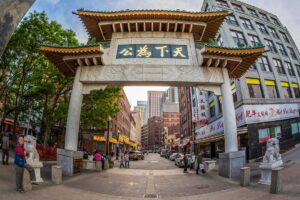
What To See in Chinatown
China Trade Gate
The China Trade Gate serves as an iconic entrance to Boston’s Chinatown, symbolizing the neighborhood’s rich cultural heritage. This majestic gate, adorned with traditional Chinese symbols and intricate designs, offers a photographic keepsake for visitors. Here, you can immerse yourself in vibrant street life, marvel at the gate’s ornate architecture, and experience the palpable energy of this historic enclave.
Chinese Merchants Association Building
The Chinese Merchants Association Building in Boston’s Chinatown is a historic landmark symbolizing the neighborhood’s vibrant trade history. Once a bustling center for local Chinese businesses, it remains a focal point of community activity today. Visitors can admire the building’s distinctive Eastern architecture and explore a variety of shops and eateries that reflect the rich cultural tapestry of this enchanting neighborhood.
Chinatown Park
Chinatown Park serves as a serene retreat amid the lively heart of Boston’s Chinatown. This urban oasis boasts a beautiful bamboo grove, a sparkling water feature, and winding paths inspired by the Chinese zodiac. Visitors can enjoy a leisurely stroll, observe local residents practicing tai chi, and immerse themselves in the harmonious blend of nature and urban life.
#VacayYourWay
Get ready to #VacayYourWay with Old Town Trolley in Boston! Treat yourself to the relaxing vacation you deserve, whether you’re a history buff, a sightseer, or an adventurous family. From the Freedom Trail to the North End and everywhere in between, see the best of Boston with live narration from our friendly and knowledgeable guides.
Conclusion
In conclusion, Boston is a city where historical richness intertwines with modern vibrancy. Its neighborhoods, from the aquatic life-filled New England Aquarium, the verdant Boston Common, and the history-laden Charlestown to the culturally vibrant Chinatown, each tell a unique story. Whether you’re a history aficionado, a nature lover, or a food enthusiast, Boston promises an enriching and unforgettable experience. Don’t miss out on discovering these captivating neighborhoods on your next visit to the city.
FAQs
What are the best neighborhoods in Boston?
Some of the best neighborhoods in Boston include Beacon Hill, Charlestown, Cambridge, Back Bay, and North End. These neighborhoods offer a range of amenities, cultural attractions, and convenient locations for residents.
What are the main neighborhoods in Boston?
The main neighborhoods in Boston include Back Bay, Beacon Hill, Charlestown, Chinatown-Leather District, Downtown, East Boston, Fenway-Kenmore, Jamaica Plain, Longwood, North End, South Boston, South End, West End, and West Roxbury. Each neighborhood has its own unique charm, offering a mix of culture, history, and vibrant communities for residents and visitors to enjoy.
What is the most beautiful neighborhood in Boston?
While beauty is subjective, Beacon Hill is often considered one of the most beautiful neighborhoods in Boston. With its picturesque streets lined with elegant brownstones, gas lamps, and charming brick sidewalks, Beacon Hill exudes historic charm and offers stunning views of the city. Its quaint shops, cozy cafes, and proximity to the Boston Common add to its allure.

